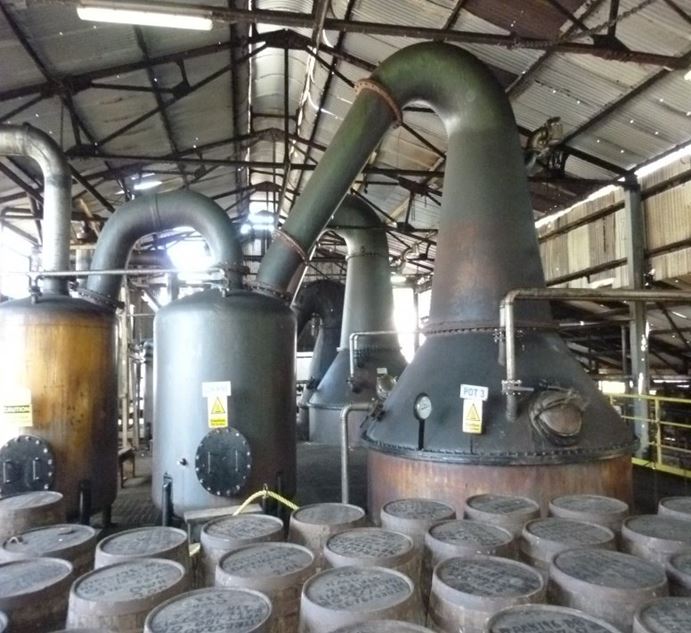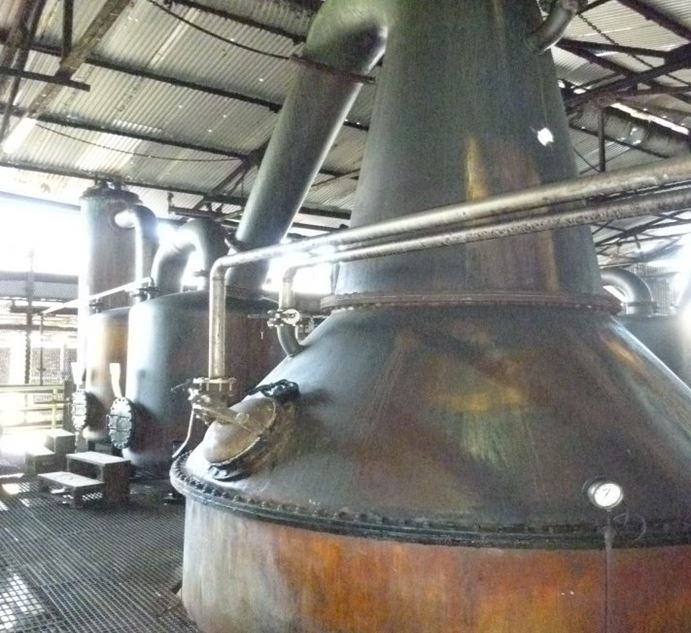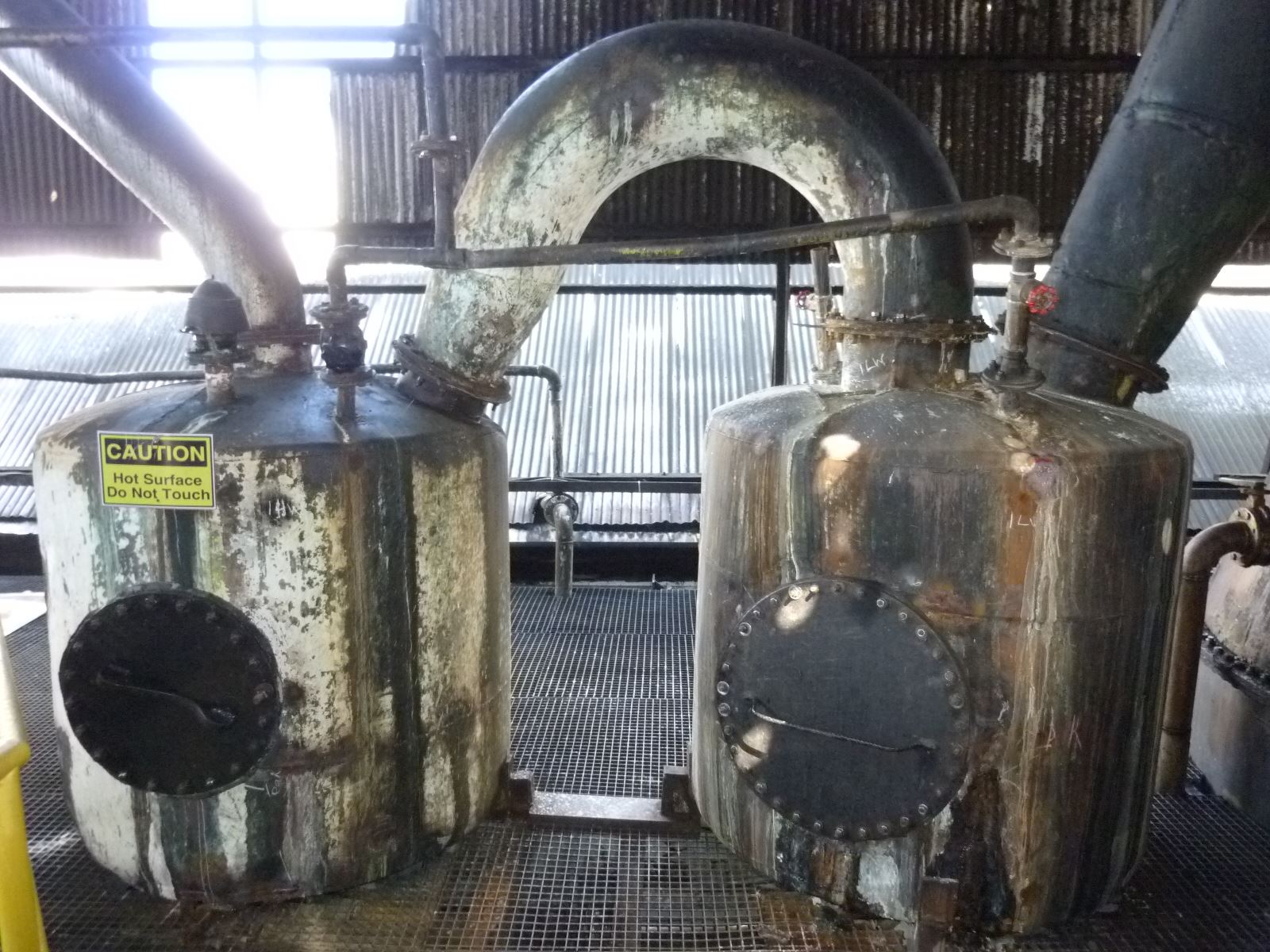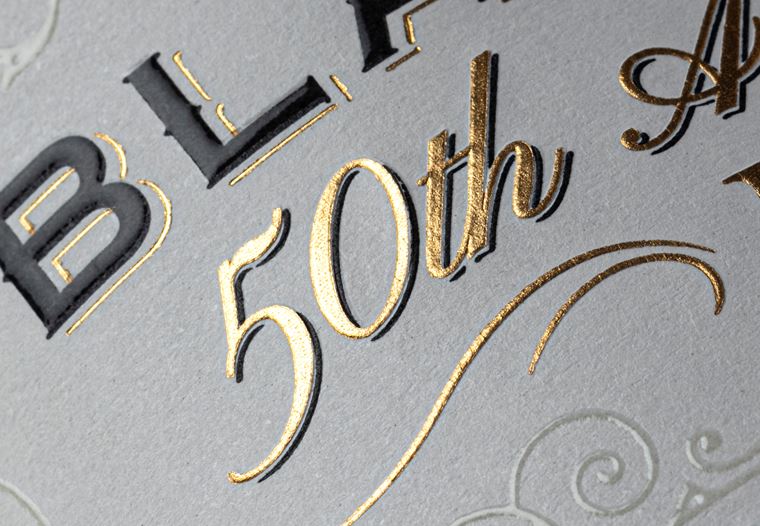

How Is Rum Made
Take a deep-dive into the rum making process to discover its journey from sugarcane fields to your glass.

DISTILLATION
Most spirits are made in either copper pot or column stills. But the rum world opens this up with wooden stills, double retorts, batch stills and more. Discover the various distillation methods used around the world, creating a multitude of different rum styles.


WHAT IS DISTILLATION?
Distillation is a method of separating and evaporating all of the various alcohols and flavour molecules out of the fermented wash, while removing the impurities. The end spirit is essentially the concentrate of volatile compounds, fatty acids, fusel oils, ethanol, and water - which altogether comprise the building blocks of flavour that make up rum.
Depending on the type of still you use, the ABV you distill your rum to, and how much of the impurities are stripped out of the distillate, which will all have an impact on your end flavour profile.
HEADS, HEARTS, AND TAILS
In distillation, the main alcohol we are interested in for drinking is ‘ethanol’ - however there are many other alcohols that will evaporate throughout the process, and not all of them are safe or pleasant to drink - it is the role of the distiller to make your rum both safe and enjoyable!
You may hear the term ‘heads, hearts, and tails’ used in relation to distillation - this refers to the different sections that a distiller is aiming to separate out by making ‘cuts’.
Heads - represent the very first alcohols that will evaporate from the fermented wash (as they have the lowest boiling point). In the heads you’d usually find methanol, as well as more solvent smelling aromas. You will also however get esters at this stage, which for many rum lovers is an extremely desirable part of the distillation!
Hearts - After the heads have evaporated, the next section to evaporate is the ‘hearts’ - this is the part which contains ethanol, and will be used for bottling, blending, or ageing - this is the drinkable part of the distillation!
Tails - Once the ethanol has evaporated, the distiller will make a cut to separate the hearts from the rest of the alcohols left in the wash, which are generally known as the tails - these contain all the heavier, oilier components such as fusel oils.
Dunder - Once all the alcohol has been evaporated out of the wash, the remaining wash liquid left in the still is referred to as ‘dunder’. As you’ll read in our fermentation section, dunder can be an incredibly useful component if wishing to add more acidity to your next distillation, but otherwise will generally be diluted and discarded by the majority of distilleries.
It should be noted that even the heads and tails still have their uses and can be either recycled into the next distillation, or small amounts used in the overall blend of rum to add certain flavours or aromas to a distillate (without adding so much that it becomes unsafe or undesirable).
Where a distiller makes their cuts, and how much of these heads and tails are repurposed into the distillate or incorporated into the final blend, will vastly affect the flavour profile of the rum.
COPPER POT STILLS
Copper pot stills represent the origins of rum distillation in the Caribbean. The first pot stills we see are brought to Barbados by the Portuguese in the 1500s, where sugarcane distillate was made with fermented sugarcane juice (not molasses as is considered traditional there today).
Comprising a large ‘pot’ where your wash is placed, this still is then heated to around 72.4 degrees celsius, at which point alcohols will start to evaporate. Though originally heated by fire, today steam or electric is the (much safer) standard! Copper is often used in stills because of its ability to react with sulphur and remove this compound from distillate. Other less reactionary metals are not as good as removing impurities from spirit.
Sometimes referred to as a batch still, pot stills require a single charge of wash to be loaded into the still, distilled, then cleaned out before starting again. This is a slower process than column distillation which can effectively be continuously fed in many cases, and is much more economical. The argument for pot stills is that you generally have much higher congener counts and therefore much heavier, flavourful rum - however there are some examples of column still rums which can be just as pungent and congener heavy.
It is worth noting that the initial distillation from a fresh batch of molasses may only yield an ABV of around 30-35% ABV - too low to be called rum. Therefore a second distillation is required in order to attain the necessary ABV - typically between 75-90% ABV.
RETORT AND DOUBLE-RETORT POT STILLS
An adaptation of the common pot still that is championed in the Caribbean, retorts are separate copper vessels that are connected by lyne arms to the main pot still.
While the pot will hold the new batch of fermented wash ready to be distilled (usually at around 7-10% ABV), the additional vessel(s) are charged with the heads and tails cut from the previous distillation, which are at a much higher ABV than the base wash.
When the rum is distilled, it passes through the additional retort(s), which are in turn heated and begin their own distillation process. By recycling the heads and tails from the last distillation, the distiller is essentially able to carry out a double or triple distillation in just one run - saving considerable time and energy when measured next to the traditional copper pot still.
You’ll find double retort pot stills in use at many key distilleries in the Caribbean, particularly in Jamaica, Guyana, and Barbados.
WOODEN VAT STILLS
Two wooden vat stills remain in use in the rum world, both located at Guyana’s Diamond Distillery. - the Port Mourant still (double vat) and Versailles still (single vat).
These are essentially variations on the retort stills above, but with vessels made of Greenheart wood as opposed to the copper retorts outlined above (Greenheart is particularly resilient to being constantly wet, but still needs repairing and replacing from time to time).
The stills aren’t completely wooden however, using copper swan necks and lyne arms to collect the vapour from distillation. The Port Mourant still is famed for its extremely high congener distillates, making incredibly rich, oily, and flavourful rum. It began its life at the distillery of the same name, before moving to Uitvlugt (where it distilled the rum you can find in our Black Tot 40 Year Old Demerara Rum) before finally finding its home at Diamond Distillery where it continues to operate today.
HYBRID STILLS
Hybrid stills work as a crossover between a traditional pot still vessel with a small copper column attached. The addition of rectification plates in the column allows for greater control of the distillate coming from the pot, with the distiller given the advantage of making the most of both higher levels of congeners of pot still distillation, with the control and precise accuracy afforded by column distillation.
COPPER COLUMN STILL
Copper Column stills were invented much later than pot stills, and you start to see many distilleries convert to this ‘new’ technology throughout the 1800s. Columns provide a faster and more consistent alternative to pot stills. The column contains a number of rectifying plates within that allow the distiller to control the level of congeners that evaporate into the distillate.
The advantage with a column is that you have an incredible degree of control as a distiller as to exactly how ‘clean’ or flavourful you want your rum to be - the more plates your column has, the more degrees of separation the distiller has to choose between.
WOODEN COFFEY STILL
The Enmore Wooden Coffey Still in Guyana is the last remaining wooden column still in the rum world. Originally built at the Enmore Estate in Guyana, this still has been relocated to Diamond Distillery where it continues to operate today. Much like its two wooden vat still companions in the distillery, the Enmore is famed for its uniqueness in the rum world - a square shaped column with square plates, making rich, balanced, fruit forward rum.
INDUSTRIAL or MULTI-COLUMN STILLS
Multi-column stills are able to distill a range of different rums up to as high as 96% ABV, and are generally used to create extremely large quantities of rum. The disadvantage of distilling to such a high ABV is that you lose a lot of the congeners (flavour) in the rum, thus making a much more light and neutral rum. The advantage is you have a lot more rum at a much more economic price. A large percentage of the ‘bulk rum’ produced in the world comes from these type of stills because they are so comparatively cheap and efficient to run, especially when compared to their much more labour intensive pot still predecessors.
However, it should be noted that multi-columns can equally be used to create extremely flavourful rums - the Savalle still at the Diamond distillery in Guyana, as well as the historic Caroni column stills from Trinidad are famous for their rich, congener-heavy rums.





